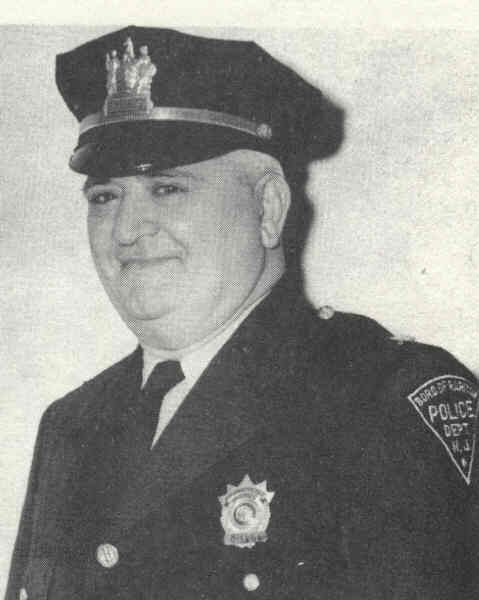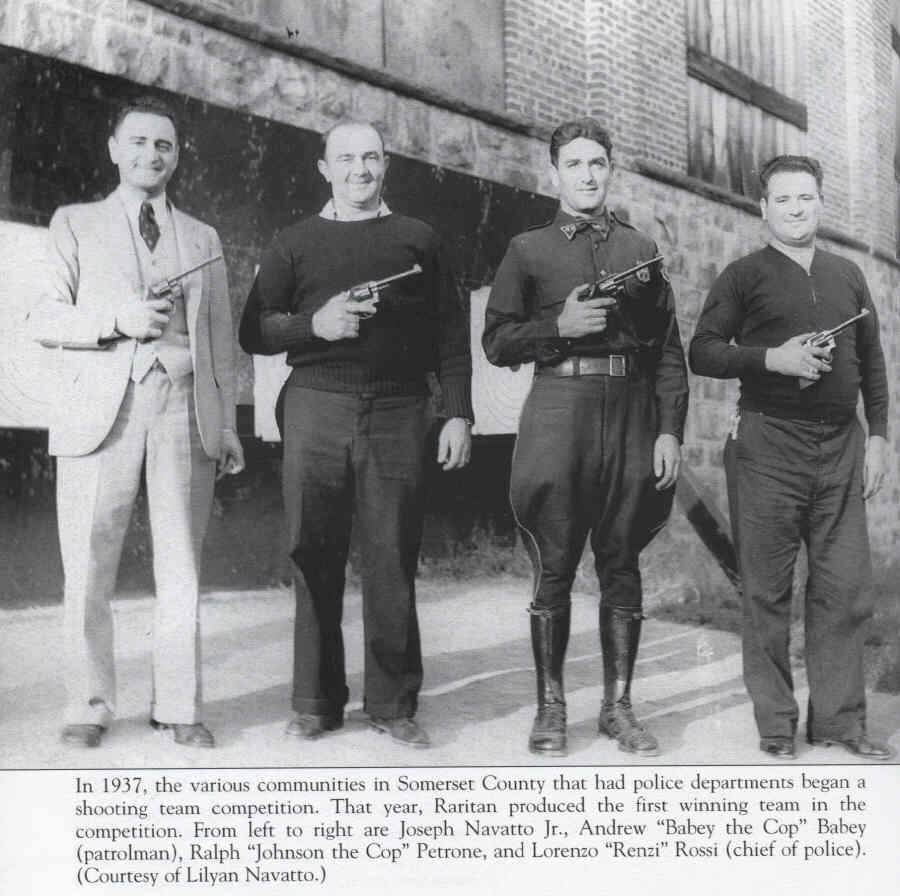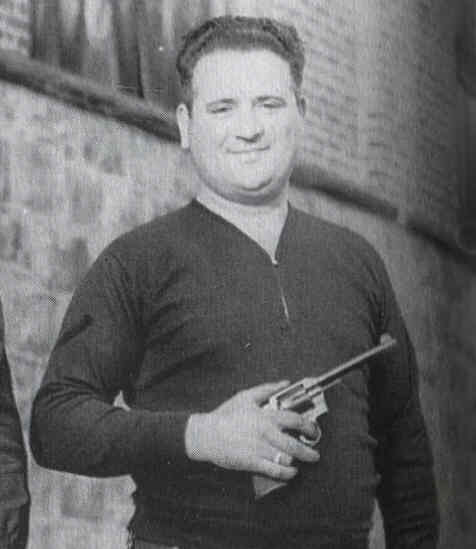He had his own Brand of Justice
Served on Police Force 1923-1967. Was Police Chief 1937-1967

Lorenzo Rossi was born in 1899 and lived in New York City when, as a teenager, the family moved to Raritan. They lived in houses on Second Avenue and Second Street. He met a local girl, Theresa Quelly, whom he would make his wife. As a young man, he worked at The Somerville Iron Works as a tin smith helper. An accident at work cut off two finger tips on his left hand. That convinced him that he did not want to spend his career in factory work. He approached the Raritan board of commissioners and expressed his interest in becoming a police officer. Town official Joseph Navatto was impressed with his enthusiasm and recommended him for the position of police officer. He was approved and joined the three member Raritan Police Dept. in 1923.

John Pacifico recalled “If a kid did something bad and a resident complained, Chief Rossi was summoned. Upon arrival, he would assess the situation with the youth and the witnesses and either bring the kid to their parents or give the kid a stern warning not to do it again. Seldom was any teenager arrested or taken to court. The issue was dealt with on the spot. Sometimes that meant a swift kick in the butt, which was acceptable back then.”

Raritan’s Peter Vitelli who grew up in the Rossi era recalled: “Lorenzo Rossi ruled with an iron hand, but not for personal gain. He cared about the people, especially the kids. He was beloved by the people and well respected.”
What motivated Rossi was his desire to do good for the kids. This expanded into charity work. When a local boy, Tony Vendula, needed special heart surgery at John Hopkins Hospital in Baltimore, he raised $2500 so that he could have the surgery. He was also actively involved in the charitable work of the St. Rocco Society.
Chief Rossi retired in 1967. By the end of the 1960s the standards for police conduct had changed, and some new laws and court rulings brought into question Rossi’s tactics. However, an editorial from a program made for his retirement dinner summed up how the locals felt. For generations of Raritan youngsters, the strong arm of the law to them meant Chief “Renzi” Rossi. … Regardless of how those concerned with the protection of civil rights might regard Chief Rossi’s methods, the result was that any potential juvenile delinquents were returned to the straight and narrow.

Lorenzo Rossi’s goal had been to make Raritan a safe place to live and to set kids who might be headed for trouble on the right path. Over the course of his 43 years as local policeman, he accomplished those goals with distinction. To honor his service, a street in Raritan “Renzi Road” is named after him.
While he is legendary in Raritan history, few pictures of him exist. This author, along with some Raritan seniors, could not locate any relatives. If anyone knows of a relative who could possibly help us locate photos and or articles about him, please email author Bruce Doorly at bdoorly@verizon.net.